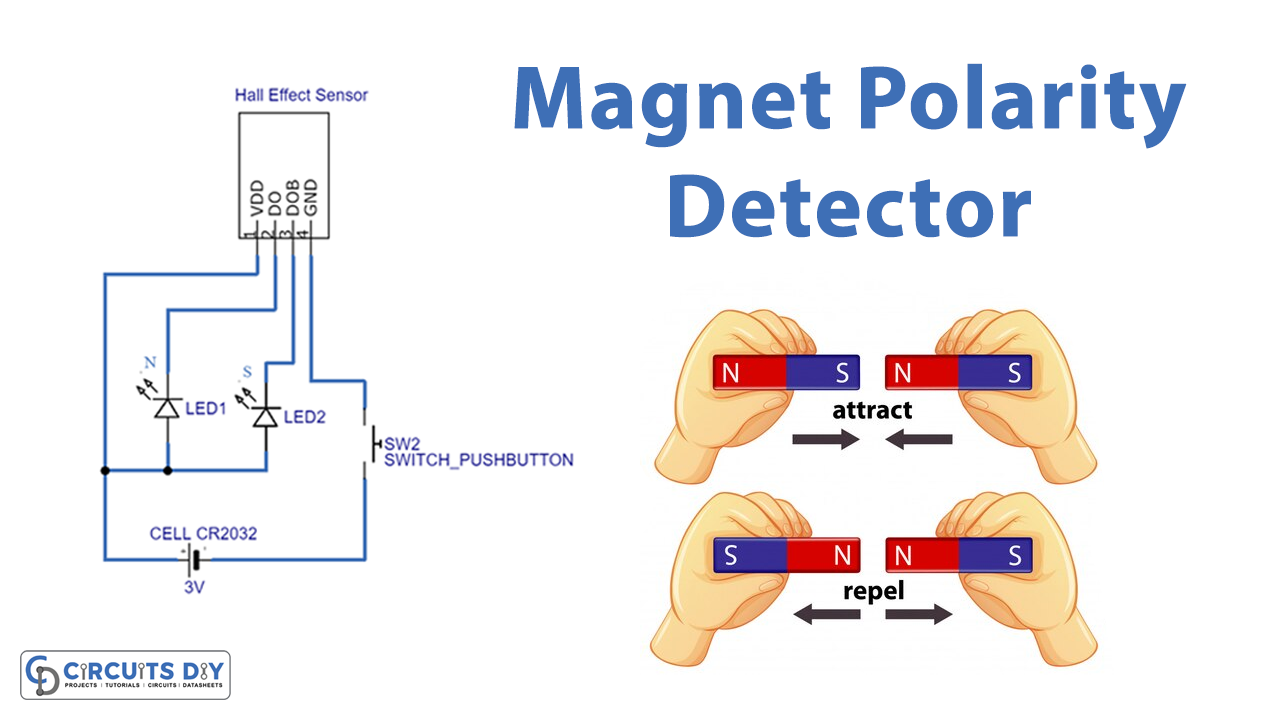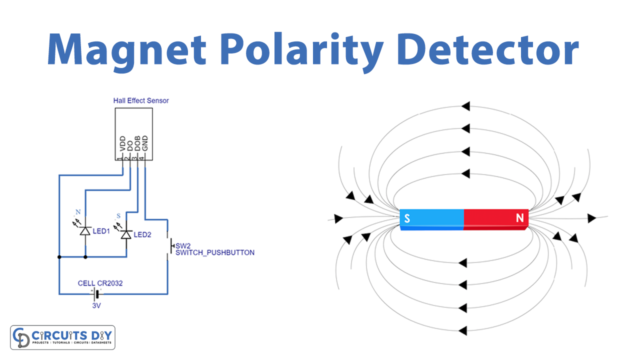There are so many shapes and types of magnets we have, like neodymium magnets, ring magnets, and disc magnets. So sometimes we need to identify the polarity, and it’s not an easy task to identify it. As we know the magnet has two polarities called the North pole and the South pole. Here if both poles attract each other definitely one is North and the other is the South pole, if each other repels each then these two are the same pole. But we can’t decide which is the South and the North pole, therefore to make the task easy we make a simple circuit by using the hall effect sensor APX9141.
Hardware Required
| S.no | Component | Value | Qty |
|---|---|---|---|
| 1. | Hall Effect Sensor | APX9141 | 1 |
| 2. | Red LED | – | 1 |
| 3. | Blue LED | – | 1 |
| 4. | Connecting Wires | – | – |
| 5. | Cell 3V | CR2032 | 1 |
| 6. | Push Button | – | 1 |
Block Diagram

Circuit Diagram

APX9141 IC Configuration

Features
- On-chip Reverse Voltage Protection
- On-chip Hall Sensor
- Low Operating Supply Voltage : 3 V
- High Output Sinking Capability up to 400mA
- Versatile sensitivity and hysteresis setting
- Reliable and Rugged
- 4 pin TO-92M Package
Working Explanation
Here as we can see in the circuit, the main part of this circuit is the APX9141 hall effect sensor. Hall Effect is related to moving charge in a magnetic field. This sensor is a small-scale microelectromechanical systems (MEMS) device for detecting and measuring magnetic fields. It can detect changes in a magnetic field like flux, strength, and direction. When the magnetic flux density around the sensor changes due to the magnet, the sensor detects it and generates an output voltage. And due to this output voltage LED connected to the magnet sensor changes its state from low to high.
Here this sensor has a hall element and two different outputs DO and DOB by using these outputs we can easily detect the poles of the Magnet. Further, the Red LED is connected to DO (pin 2), it representing the North pole and the Blue LED is connected to DOB (pin 3) representing the South pole. The CR2032 3V Cell is placed to provide bias, as it can operate in 3V.
Applications
The magnet polarity detector is widely used by steel suppliers and fabricators to indicate the degree and polarity of residual magnetism in ferrous products.







